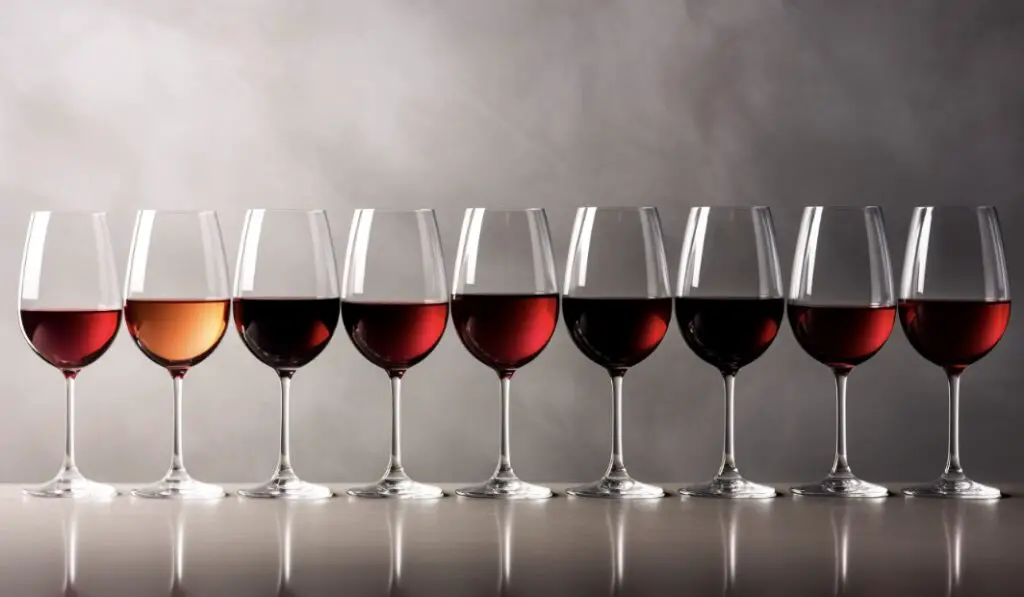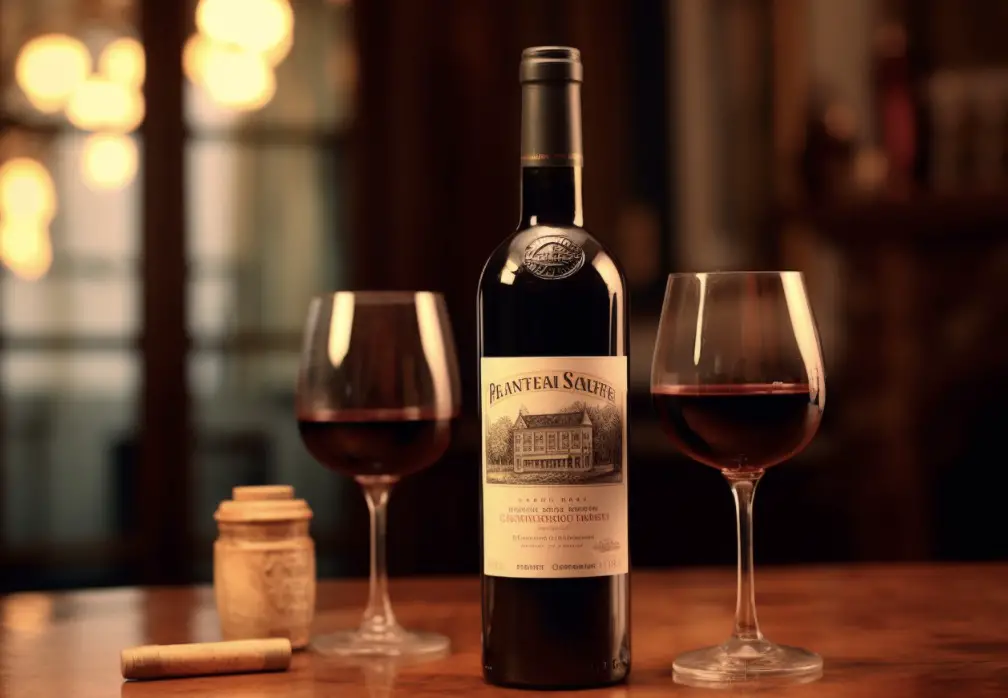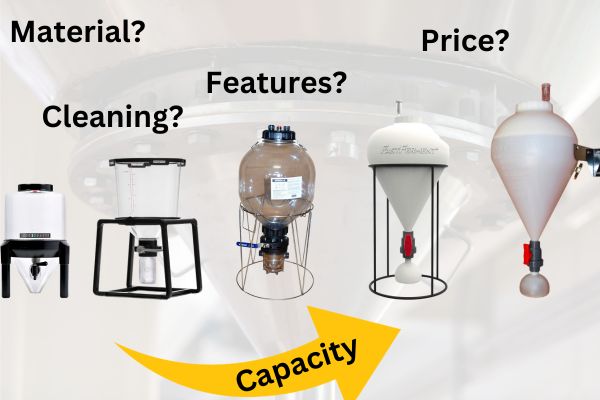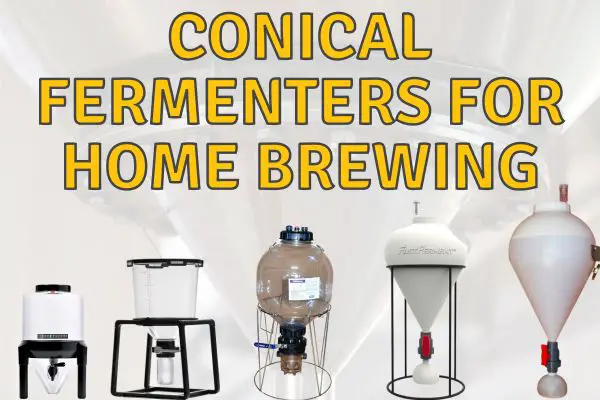What is the difference between Bordeaux and Merlot? The answer to this question lies in understanding the origins, grape varieties, and wine production methods of these two famous wine regions.
Bordeaux is a region in France known for its world-class red wines, while Merlot is a grape variety predominantly used in Bordeaux wines. That is, they are somewhat synonymous, but not quite as other grape varieties are grown in Bordeaux and used in Bordeaux wines (such as Cabernet Sauvignon and Cabernet Franc) as well.
In this blog post, we will delve deeper into the differences between Bordeaux and Merlot wines, their distinct characteristics, and the role of terroir in shaping their unique flavors.
Bordeaux: A World-Class Wine Region
The Bordeaux wine region is located in the southwest of France, near the Atlantic coast. The region is famous for producing some of the most sought-after wines in the world, including the prestigious First Growth wines.
Bordeaux wines are typically made from a blend of different grape varieties, with the primary ones being Cabernet Sauvignon, Merlot, and Cabernet Franc.
One of the most important factors in the quality and character of Bordeaux wines is the region’s unique terroir. Bordeaux has a diverse range of soils, including gravel, limestone, clay, and sand. These different soil types contribute to the distinct flavor profiles of the wines produced in the region.
Additionally, Bordeaux has a maritime climate, which is characterized by mild winters and warm, dry summers. This climate is ideal for grape cultivation, allowing the grapes to ripen fully and develop complex flavors.
Merlot: A Key Grape Variety in Bordeaux Wines
Merlot is a dark-skinned grape variety that is widely planted in the Bordeaux region.

It is the most widely planted grape variety in Bordeaux, accounting for over 60% of the total grape plantings in the region. Merlot grapes are typically used as a blending partner with other grape varieties, most notably Cabernet Sauvignon.
Merlot grapes are known for their soft, velvety texture and rich, fruity flavors. They tend to have lower acidity and tannin levels than Cabernet Sauvignon, which makes them more approachable and easy to drink. Merlot wines are characterized by flavors of plum, cherry, and blackberry, with hints of chocolate, vanilla, and spice.
The Role of Blending in Bordeaux Wines
Bordeaux wines are typically made from a blend of different grape varieties. The blending process is an essential part of Bordeaux winemaking, as it allows winemakers to create wines with a balance of flavors, acidity, and tannins.
The most common grape varieties used in Bordeaux blends are Cabernet Sauvignon, Merlot, and Cabernet Franc, with smaller amounts of Petit Verdot, Malbec, and Carménère sometimes included as well.

The proportion of each grape variety in a Bordeaux blend varies depending on the specific terroir of the vineyard and the preferences of the winemaker. In general, wines from the left bank of the Gironde River, such as those from the Médoc and Graves sub-regions, tend to have a higher proportion of Cabernet Sauvignon.
In contrast, wines from the right bank, such as those from the Saint-Émilion and Pomerol sub-regions, typically have a higher proportion of Merlot.
Merlot-Dominant Wines vs. Cabernet Sauvignon-Dominant Wines
While both Merlot and Cabernet Sauvignon are key grape varieties used in Bordeaux wines, there are significant differences between Merlot-dominant and Cabernet Sauvignon-dominant wines.
Merlot-dominant wines are often characterized by their soft, velvety texture and fruity flavors. They tend to be more approachable and easy to drink, with lower acidity and tannin levels than their Cabernet Sauvignon-dominant counterparts. Merlot-dominant wines typically have flavors of plum, cherry, and blackberry, with hints of chocolate, vanilla, and spice.
On the other hand, Cabernet Sauvignon-dominant wines are known for their higher acidity and tannin levels, which give them a more structured and complex profile. These wines are often described as powerful and full-bodied, with flavors of blackcurrant, cassis, and cedar, along with notes of tobacco, leather, and earth.
Aging Potential of Bordeaux and Merlot Wines
The aging potential of Bordeaux and Merlot wines varies depending on the specific wine and its composition. In general, Bordeaux wines have excellent aging potential due to their high tannin and acidity levels, which act as natural preservatives.

Some of the top Bordeaux wines, such as those from the First Growth estates, can age for several decades or more, developing complex tertiary flavors over time.
Merlot wines, particularly those from the right bank of Bordeaux, can also have excellent aging potential. However, Merlot-dominant wines tend to be more approachable in their youth than Cabernet Sauvignon-dominant wines, making them suitable for both short-term and long-term cellaring.
Pairing Bordeaux and Merlot Wines with Food
Bordeaux and Merlot wines are versatile when it comes to food pairings. In general, these wines pair well with a wide range of dishes, from grilled meats and roast poultry to rich stews and earthy vegetable dishes.
Merlot-dominant wines, with their soft tannins and fruity flavors, pair particularly well with dishes that feature red meat, such as beef, lamb, or venison. The rich, velvety texture of Merlot wines also complements creamy sauces and risottos.
Cabernet Sauvignon-dominant wines, with their higher acidity and tannin levels, are a great match for fatty cuts of meat, such as ribeye steak or short ribs.
These wines also pair well with dishes that feature bold, savory flavors, such as mushroom ragout or blue cheese.
Conclusion
In conclusion, the main difference between Bordeaux and Merlot lies in the fact that Bordeaux is a region in France known for its world-class red wines, while Merlot is a grape variety predominantly used in Bordeaux wines.
Bordeaux wines are typically made from a blend of different grape varieties, with Merlot being the most widely planted grape in the region. The unique terroir of Bordeaux, along with the blending of various grape varieties, contributes to the distinct character and flavor profiles of these wines.
10 facts about Bordeaux and Merlot:
1. Bordeaux is a world-class wine region located in the southwest of France.
2. Merlot is the most widely planted grape variety in Bordeaux, accounting for over 60% of the total grape plantings.
3. The primary grape varieties used in Bordeaux wines are Cabernet Sauvignon, Merlot, and Cabernet Franc.
4. Bordeaux wines are typically made from a blend of different grape varieties.
5. Merlot-dominant wines are characterized by their soft, velvety texture and fruity flavors.
6. Cabernet Sauvignon-dominant wines are known for their powerful, full-bodied profile and higher acidity and tannin levels.
7. The terroir of Bordeaux plays a crucial role in shaping the flavors and characteristics of its wines.
8. Bordeaux wines have excellent aging potential, with some top wines capable of aging for several decades or more.
9. Merlot wines can also have excellent aging potential, but are often more approachable in their youth than Cabernet Sauvignon-dominant wines.
10. Both Bordeaux and Merlot wines are versatile when it comes to food pairings, matching well with a wide range of dishes.
FAQs
Is Bordeaux red wine dry or sweet?
Bordeaux red wine is typically dry. In the Bordeaux region of France, the red wines are known for their dry and tannic characteristics. The grapes used in Bordeaux red wines, such as Cabernet Sauvignon, Merlot, and Cabernet Franc, are known for producing wines with a dry taste profile. However, it is important to note that within the Bordeaux region, there is a range of styles and variations in sweetness levels, depending on the specific winemaking techniques and grape blends used.
What does red Bordeaux taste like?
Red Bordeaux wines are known for their elegance, complexity, and age-worthiness. The taste of red Bordeaux can vary depending on the specific appellation, vintage, and blend of grape varieties used. However, some general characteristics are commonly associated with red Bordeaux:
1. Fruit Flavors: Red Bordeaux often displays flavors of blackcurrant, blackberry, and plum. These fruits can range from ripe and juicy in younger wines to more dried and concentrated in older vintages.
2. Earthy Notes: Bordeaux wines often exhibit earthy aromas and flavors, such as tobacco, cedar, leather, and sometimes a hint of truffle. These earthy qualities can add depth and complexity to the wine.
3. Tannins: Bordeaux wines are typically structured with firm tannins, especially when young. These tannins provide a grippy or drying sensation in the mouth and contribute to the wine’s ability to age and develop over time.
4. Oak Influence: Many Bordeaux wines are aged in oak barrels, which can impart additional flavors such as vanilla, spice, and toastiness. The level of oak influence can vary depending on the producer’s style and the wine’s classification.
5. Balance and Acidity: Bordeaux wines are known for their balance between fruit, tannins, and acidity. The acidity helps to keep the wine fresh and lively, adding to its overall harmony.
It is important to note that Bordeaux wines can vary significantly depending on the specific appellation within the region, the winemaker’s style, and the age of the wine. Exploring different appellations, vintages, and producers can reveal a wide range of flavor profiles within the Bordeaux category.
Is Merlot A Bordeaux wine?
Yes, Merlot is a Bordeaux wine. It is one of the primary grape varieties used in the production of red Bordeaux wines. Merlot is typically blended with other grape varieties such as Cabernet Sauvignon, Cabernet Franc, and Petit Verdot to create the renowned Bordeaux blends. It contributes softness, fruitiness, and a rounder mouthfeel to the wines, balancing the tannins and structure provided by the other grape varieties.
Which Bordeaux is Merlot?
In Bordeaux, Merlot is one of the primary grape varieties used in winemaking, particularly in the Right Bank region. The Right Bank includes appellations such as Saint-Émilion and Pomerol, where Merlot dominates the blends. These wines are known for their rich, smooth, and approachable characteristics, with Merlot typically comprising a significant portion of the blend. In Saint-Émilion, for example, Merlot can make up to 60-70% of the final blend, while in Pomerol, it often accounts for an even higher percentage. However, it is important to note that Merlot is also used in varying proportions in many other Bordeaux appellations, including the Left Bank, where Cabernet Sauvignon is traditionally the dominant grape variety.
How is Bordeaux wine different?
Bordeaux wine is different from other wines primarily due to its unique blend of grape varieties, terroir, and winemaking techniques. Here are some key factors that distinguish Bordeaux wine:
1. Grape Varieties: Bordeaux is known for its traditional grape varieties, including Cabernet Sauvignon, Merlot, Cabernet Franc, Petit Verdot, and Malbec for red wines, and Sauvignon Blanc, Sémillon, and Muscadelle for white wines. The proportions of these varieties in the blend vary depending on the specific Bordeaux appellation.
2. Terroir: Bordeaux’s diverse terroir plays a crucial role in shaping the wine’s character. The region is divided into several sub-regions, each with its own soil types, microclimates, and topography. The left bank of the Gironde River, known as the Médoc, typically produces wines that are more structured and tannic, while the right bank, including Saint-Émilion and Pomerol, tends to yield wines that are softer and more approachable.
3. Blending: Bordeaux wines are renowned for their artful blending of different grape varieties. Red Bordeaux wines are typically blends, with Cabernet Sauvignon dominating in the Médoc and Cabernet Franc and Merlot being more prevalent on the right bank. These blends allow winemakers to create wines with complexity, balance, and aging potential.
4. Oak Aging: Bordeaux wines often undergo oak aging, which imparts additional flavors, aromas, and tannins. Traditionally, Bordeaux wines are aged in French oak barrels, adding nuances of vanilla, spice, and toast to the final product. The length of oak aging varies depending on the wine’s style and quality level.
5. Classification System: Bordeaux has a renowned classification system that ranks the region’s top châteaux. The most famous classification is the Bordeaux Wine Official Classification of 1855, which classified the Médoc and Sauternes estates into different growths or “crus.” This system has been updated over the years, but it remains a significant factor in Bordeaux’s reputation.
Overall, Bordeaux wines are often characterized by their elegance, structure, and aging potential. They showcase a harmonious balance between fruit, acidity, tannins, and oak influence, making them highly sought after by wine enthusiasts worldwide.
Are Merlot and Bordeaux the same?
No, Merlot and Bordeaux are not the same. Merlot is a red wine grape variety, while Bordeaux refers to a wine region in southwestern France. Bordeaux wines are typically blends that can include several grape varieties, including Merlot, Cabernet Sauvignon, Cabernet Franc, Malbec, and Petit Verdot. Merlot is one of the key grape varieties used in Bordeaux blends, particularly on the Right Bank of the region, where it often dominates the blend. However, Bordeaux wines can also be made solely from Cabernet Sauvignon or other permitted grape varieties. Merlot is also cultivated in other wine regions around the world, producing varietal wines that may differ in style and character from those of Bordeaux.




